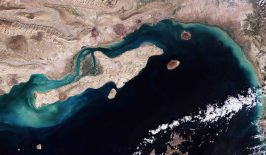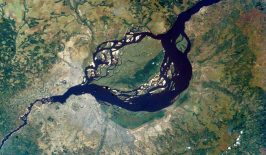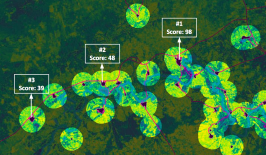A new study utilising computer modelling technology has highlighted various ways in which the introduction of widespread carbon taxes can act to reduce global poverty instead of exacerbating it further.
Currently, it is expected that the impacts of climate change – including rising temperatures and extreme weather events – will disportionately affect those living in the Global South, as well as underserved communities and groups living within the Global North. It is also a major concern that the introduction of climate policies designed to offset the damage caused by carbon emissions – such as carbon taxation – could also potentially negatively impact economically disadvantaged societies.
Now, researchers at the Potsdam Institute for Climate Impact Research in Germany have used two coordinated computer simulation models to develop new approaches which suggest carbon taxation can be used to hopefully reduce, not increase, the amount of people living under the poverty line by 2030 and beyond.
Currently, if the present socioeconomic conditions continue, it is expected that there will be around 350 million people still living in extreme poverty by 2030 – with extreme poverty defined as anyone earning less than 1.90 USD a day. If carbon emissions are taxed in accordance to Paris Agreement specifications – which aims to limit global warming by 1.5 degrees celsius – the poverty headcount could increase by an additional 50 million. This is primarily due to the GDP loss and increases in energy and food prices in poorer nations.
In order to explore the potential for alternative outcomes, researchers manipulated two computer simulation models to look at ways of redistributing carbon taxes in a different way. The Regional Model of Investments and Development (REMIND) system can be used to develop long term economic projections by using capital, labour and energy information to model economic output and emissions. Meanwhile, the Model of Agricultural Production and its Impact on the Environment (MAgPIE) takes into account land use, resource availability, population growth and other factors to make predictions regarding future food and agricultural production. Using these two systems, the team is able to create mitigation scenarios in which carbon taxes are distributed to different economic groups. Their overall impact on the GDP and prices of poor nations can then be predicted.
Redistributing Carbon Tax Revenues
According to the study, published in Nature Communications, if the revenue from carbon taxes is given back to the population on an equal-per-capita basis, the number of people living in extreme poverty globally should reduce by 6 million compared to current estimations for the future.
However, these mitigations vary by region. For example, in the countries of sub-Saharan Africa – which experience the highest rates of poverty today – the amount of carbon taxes gathered will be unlikely to offset the increase in food and energy prices they create. So although the global poverty level may reduce, in sub-Saharan Africa it could increase by as much as 10 million.
To combat this, the team developed another scheme in which five percent of the carbon tax revenues of wealthier nations is redistributed to those nations in the Global South. If this were to happen, the models suggest 30 million people in sub-Saharan Africa could escape extreme poverty, and 45 million globally.
Generally, around 100 billion USD a year would need to be drawn from the wealthier nations’ carbon tax revenues to make such a scenario reliable, which is a figure already in line with their Paris Agreement contributions. However, persuading nations to part with their tax revenues – especially if their GDP growth is also shrinking – to assist poorer nations may not always be easy. According to the study lead author, Bjoern Soergel, governments need to realise cooperation with poorer countries is essential for overall climate protection, telling Anthropocene Magazine:
“The leaders of high-income countries need to understand that domestic emission reductions and international climate finance are really two sides of the same coin – only the combination of the two will also get developing and emerging economies on board.”
The study also accepts that in the extreme long term – to 2050 – such an international finance scheme could ultimately result in a return to higher figures of poverty. For example, if the world’s industrialised nations reach carbon neutrality by this date – as many have pledged to do – the carbon tax revenues would drop or cease. This could have the effect of increasing poverty by 20 million in sub-Saharan Africa and 30 million globally. Furthermore, dependence on financial inflows from the scheme could have negative consequences for the economies of nations in the Global South, resulting in a ‘climate finance curse’. The study concludes that “additional funds beyond the transfer of carbon pricing revenues would have to be sourced”.
Predictive technologies, such as computer modelling, are becoming increasingly prevalent in a number of disciplines, and it has the potential to revolutionise climate science. The more we are able to calculate accurate predictive information, the more we will be able to apply preventative measures to climate change, rather than simply reacting to it.
Furthermore, the ability to draw on vast amounts of information, such as from sensors, satellites and drones, means even small teams can carry out studies and operations that previously would have been far beyond their means. This impact can be magnified even further if this data is subsequently made open source or combined with machine learning.
Previously, RESET has covered similar technology helping to predict forest fires and earthquakes, help optimise future rural electrification projects and even plan economic policy.






